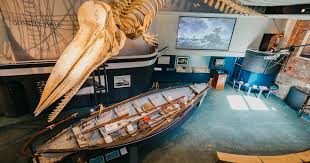Long before it became a summer haven for beachgoers and history lovers, Nantucket was known as the whaling capital of the world. From the early 18th century through the mid-19th century, this small island played a colossal role in one of America’s most important—and dangerous—industries. The story of Nantucket’s whaling history is not only one of economic success but also one of daring voyages, cultural shifts, and global influence.
The Rise of Whaling in Nantucket
Whaling began in earnest on Nantucket around the late 1600s, when settlers and Native Wampanoag peoples began hunting right whales offshore. By the early 1700s, islanders had developed more advanced whaling techniques and ventured into deeper waters. What began as coastal hunts quickly evolved into years-long voyages across the globe.
Nantucket as the Whaling Capital
By the early 19th century, Nantucket had become the undisputed epicenter of American whaling. Ships launched from the island’s harbor traveled as far as the Pacific and Arctic Oceans in search of sperm whales, prized for the oil contained in their massive heads. This oil powered lamps and lubricated machinery during the Industrial Revolution.
Life at Sea
Whaling voyages were grueling and could last up to five years. Crews faced brutal weather, disease, and the constant risk of shipwrecks. However, the potential profits were enormous. Successful whaling captains and investors became wealthy, and their fortunes shaped the architecture and culture of the island. Today, many of Nantucket’s grand homes were once owned by whaling magnates.
Diverse Crews and Cultural Impact
The whaling industry also brought together a remarkably diverse group of seamen. African Americans, Native Americans, Cape Verdeans, and immigrants from around the world worked on Nantucket whaling ships. This multicultural aspect of the island’s past is an essential part of its historical identity.
The Fall of Whaling
As petroleum replaced whale oil in the late 1800s and whale populations dwindled, Nantucket’s whaling economy declined. The island shifted toward tourism, but the echoes of its whaling past remain deeply embedded in its culture and character.
Preserving the Legacy
Visitors today can explore Nantucket’s whaling history at the Whaling Museum, operated by the Nantucket Historical Association. The museum houses fascinating artifacts, a restored 1847 candle factory, and a massive sperm whale skeleton suspended from the ceiling.
Final Thoughts
Nantucket’s whaling history is one of resilience, adventure, and global significance. Understanding this chapter of the island’s past adds rich context to its serene present. When you visit with Discover Nantucket Tours, we invite you to step back in time and experience the legacy that helped shape this remarkable island.
Ready to discover the deeper story of Nantucket? Let history come alive with Discover Nantucket Tours. Book Now!




